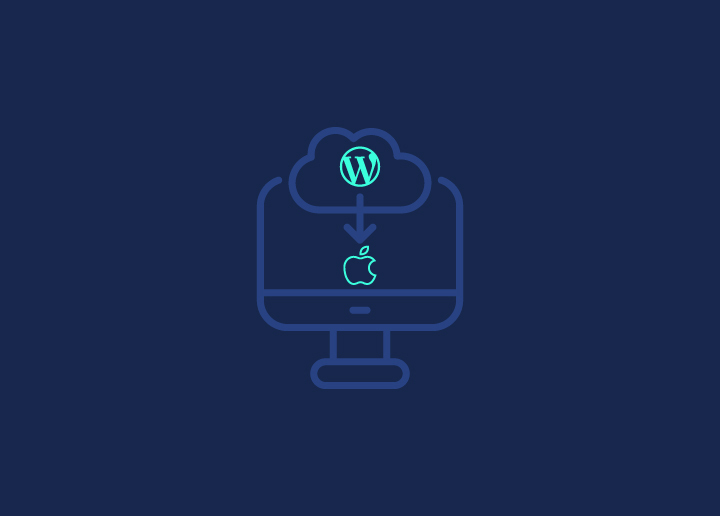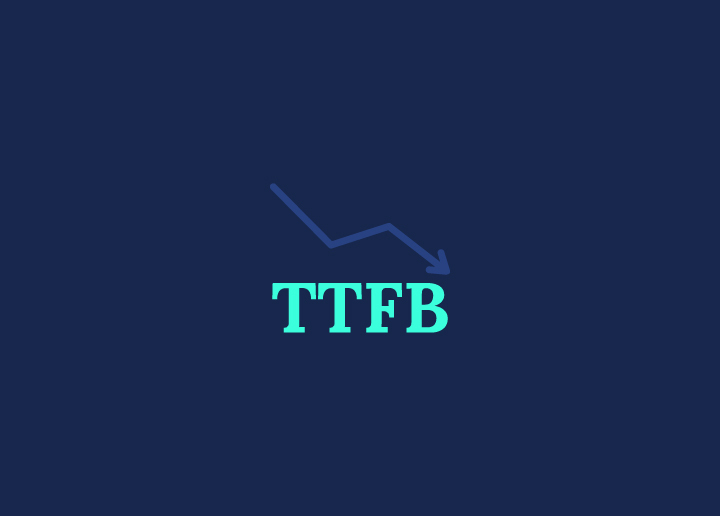Did you ever find yourself impatiently waiting for your website to load? The culprit might just be lurking in the Time To First Byte (TTFB) – the time it takes for the (your) server to send the first byte of data to a user’s browser.
So, don’t let sluggish TTFB drag your site down! In this quick guide, we’ll provide actionable strategies to cut down those wait times and get your WordPress site delivering content in a flash.
Contents
ToggleWhat is Time to First Byte (TTFB)?
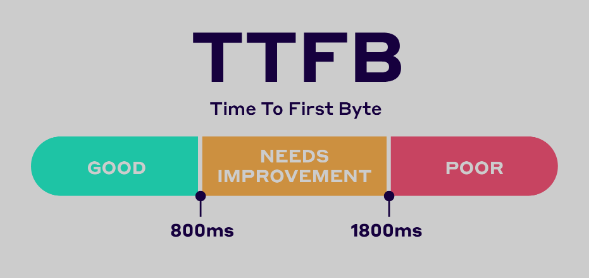
Time to First Byte (TTFB) is a web performance metric. It measures the time a user’s browser takes to receive the initial byte of data from a web server after making a request. It includes the time spent on the server processing the request, generating the page, and sending the initial (first) byte back to the browser.
TTFB is a crucial indicator of a website’s responsiveness and can be influenced by factors such as server speed, network latency, and the efficiency of server-side processes. A lower TTFB generally implies faster website loading times and a better user experience.
Read: Core Web Vitals Optimization in WordPress
Importance of Time to First Byte (TTFB)
Time to First Byte (TTFB) plays an important role in the user experience of a website. Optimizing TTFB is essential for enhancing website performance, user satisfaction, and overall online success. Beyond that, here’s why TTFB is a critical metric:
- User Experience: TTFB directly influences how quickly users perceive a website’s responsiveness.
- Search Engine Rankings: Search engines consider TTFB to be a ranking factor, impacting a site’s visibility in search results.
- Conversion Rates: Faster TTFB improves conversion rates as users are more likely to engage with swift-loading pages.
- Page Load Speed: TTFB is a key component of overall page load speed, a crucial factor for retaining site visitors.
- Mobile Experience: Particularly significant for mobile users, faster TTFB ensures a smoother browsing experience on various devices.
- Server Efficiency: TTFB reflects the efficiency of server-side processes, indicating how well a server handles requests.
Want to Speed Up Your WordPress Site?
Improve your website’s performance by reducing Time To First Byte (TTFB) in WordPress with our expert site optimization service.
How to Measure Time To First Byte?
There are various methods available to measure TTFB. Selecting the most suitable method depends on your preference, technical expertise, and the depth of analysis required for optimizing Time to First Byte.
- Browser Developer Tools: Use browser tools like Chrome DevTools or Firefox Developer Tools to analyze network timings. TTFB is available in the “Network” tab.
- Online Testing Tools: Utilize Seahawk’s Core Web Vitals Checker that offers TTFB score. Or, use web-based tools like Google PageSpeed Insights or Pingdom. These tools provide detailed reports, including TTFB measurements.
- cURL Command: Employ the cURL command in the terminal to directly measure TTFB. Execute a command like curl -s -w ‘TTFB: %{time_starttransfer}\n’ URL to get the time to first byte.
- Server Logs: Check server logs for TTFB information. Analyzing log entries can provide insights into server response times.
- Content Delivery Network (CDN) Tools: CDNs often offer performance analytics, including TTFB metrics. Explore the analytics dashboards provided by your CDN.
- Performance Monitoring Tools: Use dedicated performance monitoring tools such as New Relic or Dynatrace. These tools offer comprehensive insights into various performance metrics, including TTFB.
- Web Vitals in Google Analytics: Google Analytics includes Core Web Vitals, which cover TTFB, among other metrics. Access these insights in the Google Analytics dashboard.
Strategies to Reduce TTFB in WordPress
In the quest for a speedier WordPress experience, tackling TTFB is key. So, here are actionable strategies that’ll have your TTFB trimmed down in no time.
1. Update WordPress Core, Plugins & Themes
Outdated plugins and themes can slow down TTFB, as older versions may have performance issues or security vulnerabilities. As such, updating them is often important as updates include optimizations and bug fixes. Here are some tips to get started:
- Create a backup to avoid potential issues before performing updates.
- Keep WordPress core, plugins, and themes up to date.
- Ensure plugins and themes are compatible with your WordPress version.
- Test updates in a staging environment to catch and resolve any issues before going live.
- Uninstall unnecessary plugins and themes to reduce the overall load on your website.
2. Optimize Server Response Time
Slow server response time directly increases TTFB as it’s the time taken for the server to start sending data. This can lead to a slower overall website loading experience. To fix this:
- Opt for a hosting provider with fast and reliable servers.
- Upgrade to a higher hosting plan with better resources and performance.
- Adjust server settings, use caching mechanisms, and employ server-level optimizations.
- Regularly monitor server performance, identify bottlenecks, and troubleshoot issues promptly.
3. Update Your Site’s PHP Version
Updating your site’s PHP version is crucial for performance as well as security. Here’s why:
- Older PHP versions may have security vulnerabilities. Hence, updating ensures your site is protected against potential threats.
- Newer PHP versions often come with performance improvements, which makes your website faster.
- Some plugins and themes may require newer PHP versions. So, updating ensures compatibility with the latest web technologies.
To update, check your hosting environment, test on a staging site, and gradually roll out the update to your live site to avoid disruptions.
Related: Safely Update WordPress from Version PHP 7 Without Breaking the Site
4. Optimize WordPress Configuration
Inefficient WordPress configurations, such as poorly optimized settings and unnecessary features, can contribute to increased TTFB.
How to fix it:
- Use a caching plugin to store static content and reduce server load.
- Choose simple and SEO-friendly permalink structures to enhance performance.
- Minimize the number of post revisions stored in the database to reduce overhead.
- Enable lazy loading for images so they only load when they come into the user’s viewport.
5. Implement Caching Strategies
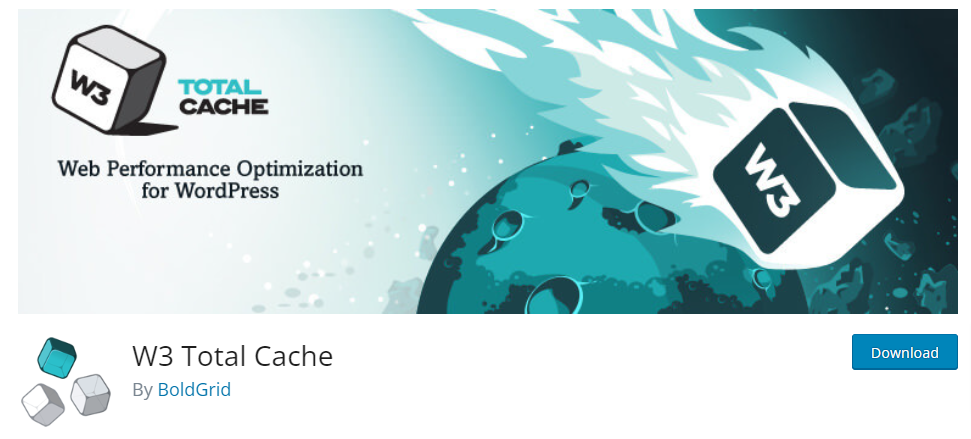
Caching stores static versions of your site’s content, reducing the need for server processing time and speeding up TTFB. To begin:
- Install a reputable caching plugin like W3 Total Cache or WP Super Cache.
- Activate page caching to store static HTML versions of your pages for quicker access.
- Set expiration times for cached resources in users’ browsers to reduce server requests.
Also, use object caching to store frequently accessed database queries & objects, improving response times. Lastly, fine-tune caching plugin settings according to your site’s needs to balance performance and functionality.
Learn: WP-Optimize vs WP Rocket: Detailed Comparison
6. Optimize Images and Media
Unoptimized images and media files contribute to larger page sizes, increasing the time it takes to download content and slowing down Time to First Byte (TTFB). To optimize images and media:
- Compress images without compromising quality using tools like TinyPNG or ImageOptim.
- Select appropriate image formats (JPEG, PNG, or WebP) based on content and quality requirements.
- Size images appropriately for their display dimensions to prevent unnecessary data transfer.
- Compress and optimize videos and other media files to minimize their impact on TTFB.
7. Optimize WordPress Database
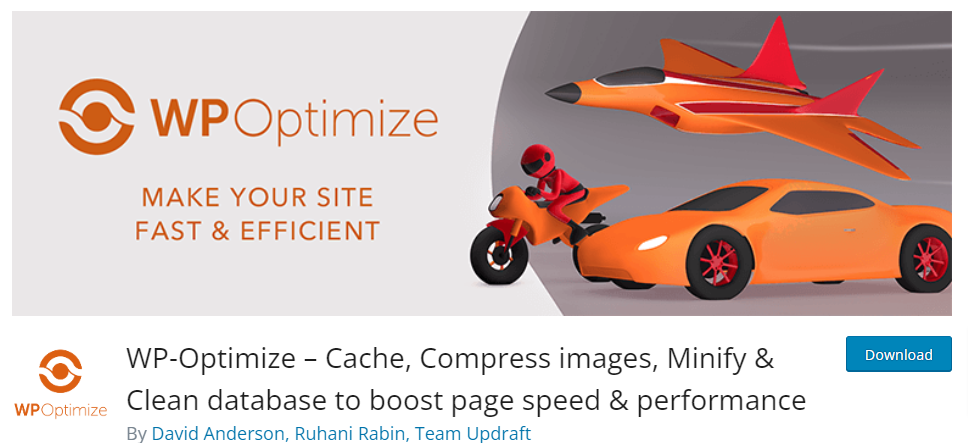
A bloated or poorly optimized database can slow down queries, affecting TTFB. To rectify this:
- Use plugins like WP-Optimize or WP-Sweep to clean up unnecessary data like post revisions and spam comments.
- Regularly optimize database tables to improve their structure and reduce query times.
- Configure WordPress to store a limited number of post revisions to prevent database clutter.
- Properly index database tables to speed up search and retrieval processes.
- Use database caching plugins to store query results, reducing the need for repeated queries.
Know more: Best WordPress Database Plugins
8. Minimize HTTP Requests
Each HTTP request adds to the time it takes to load a page, which directly impacts Time to First Byte by increasing the server’s workload. To combat this:
- Reduce the number of individual requests by combining multiple CSS and JavaScript files.
- Include small scripts directly in HTML to avoid additional requests.
- Combine different small images into a single sprite sheet to minimize image-related requests.
- Only include essential external resources like fonts and scripts to decrease dependencies.
- Load non-essential scripts asynchronously to prevent them from blocking the rendering of the page.
9. Choose a Fast Hosting Provider
Selecting a fast and reliable hosting provider sets the foundation for a swift TTFB and an overall optimized website performance.
- Choose a web hosting provider with servers geographically close to your target audience for faster data transfer.
- Assess the resources offered in hosting plans, ensuring they meet your website’s demands.
- Read reviews and analyze the performance records of hosting providers to make an informed decision.
- If necessary, consider upgrading to a higher-tier hosting plan for improved server speed and resources.
Here’s a brief overview of some of the best hosting providers:
- DreamHost: Known for reliability and solid performance, DreamHost offers shared, VPS, and dedicated hosting plans. Its features include a custom control panel, free SSL, and unlimited bandwidth.
- GreenGeeks: An eco-friendly hosting provider committed to sustainable practices, GreenGeeks provides Shared hosting, Reseller, VPS, and WordPress hosting. It offers a range of features – free domain registration and daily backups.
- WP Engine: Specializing in managed WordPress hosting, WP Engine is known for its high performance, automatic updates, and robust security features. It offers scalable plans with advanced caching and staging capabilities.
- Hostinger: Budget-friendly hosting provider with a global presence, Hostinger offers shared, VPS, and Cloud hosting. It is known for its user-friendly interface and fast-loading speeds.
- Pressable: Pressable focuses on managed WordPress hosting and provides features like automatic updates, daily backups, and expert WP support. Its emphasis is on performance and scalability for WordPress websites.
- Indystack: It offers premium hosting services with a focus on simplicity. Indystack provides scalable solutions with features like automatic backups and easy deployment.
- Create.com: It provides hosting solutions for businesses and developers. Create.com offers features like automated backups, scaling options, and a user-friendly interface.
Further reading: Best HIPAA-Compliant WordPress Hosting Services
10. Use Content Delivery Network (CDN)
A Content Delivery Network (CDN) improves TTFB by distributing website content across multiple servers globally. This reduces the physical distance between the user and the server, leading to quicker data delivery.
Tips for implementing CDN:
- Select a reputable CDN provider like Cloudflare, Akamai, or StackPath.
- Follow the CDN provider’s instructions to integrate the CDN with your website.
- Fine-tune CDN settings to optimize caching, content delivery, and security.
- Regularly monitor the CDN’s performance to ensure it aligns with your website’s needs.
- Choose a CDN that supports secure HTTPS delivery for encrypted data transfer.
Read: HTTP vs HTTPS: Why Having An SSL Is Important
11. Monitor and Test Performance
Regularly monitoring and testing your website’s performance is essential for maintaining optimal user experience. Here’s why:
- It helps identify potential issues affecting TTFB and overall speed.
- It allows for proactive troubleshooting to prevent performance degradation.
- Regular monitoring also provides insights into user experience and helps in making informed optimizations.
How to do it:
- For comprehensive performance reports, you can utilize online tools like Seahawk’s Speed Test tool and Google PageSpeed Insights.
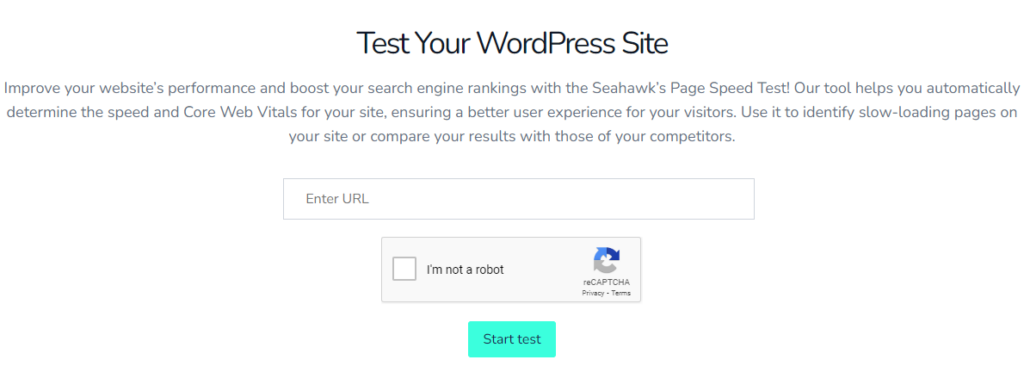
- Set up automated monitoring using services like UptimeRobot to receive real-time alerts for downtime or performance issues.
- Conduct regular load testing to simulate various user scenarios and identify potential bottlenecks.
Also read: Best Website Speed Test Tools
Conclusion
Now that you know the strategies to reduce Time to First Byte (TTFB) in WordPress, it’s time to implement them to improve your site’s performance. You can ensure your site loads quickly by optimizing server response, updating software, and leveraging caching techniques.
Also, choose a reliable hosting provider, use Content Delivery Networks, and continuously monitor your site’s health to deliver optimal experiences to visitors.
A faster TTFB not only improves user satisfaction but also boosts search engine rankings. So, make the most of these actionable tips and rev up your WordPress site to watch it zoom past loading barriers.














